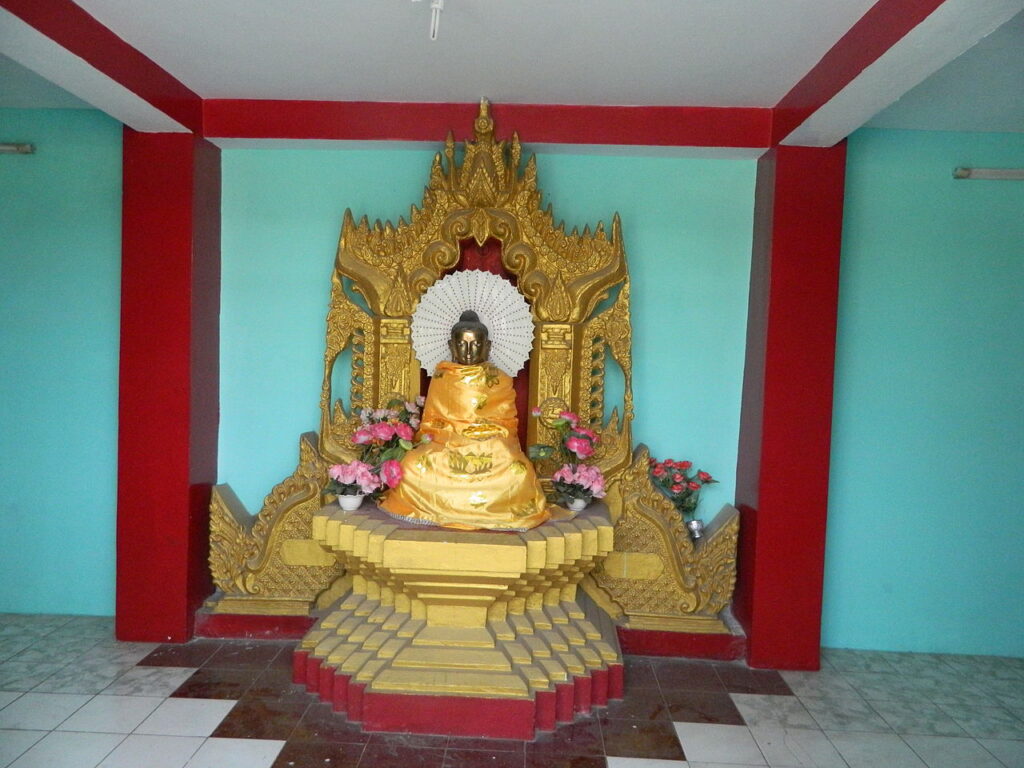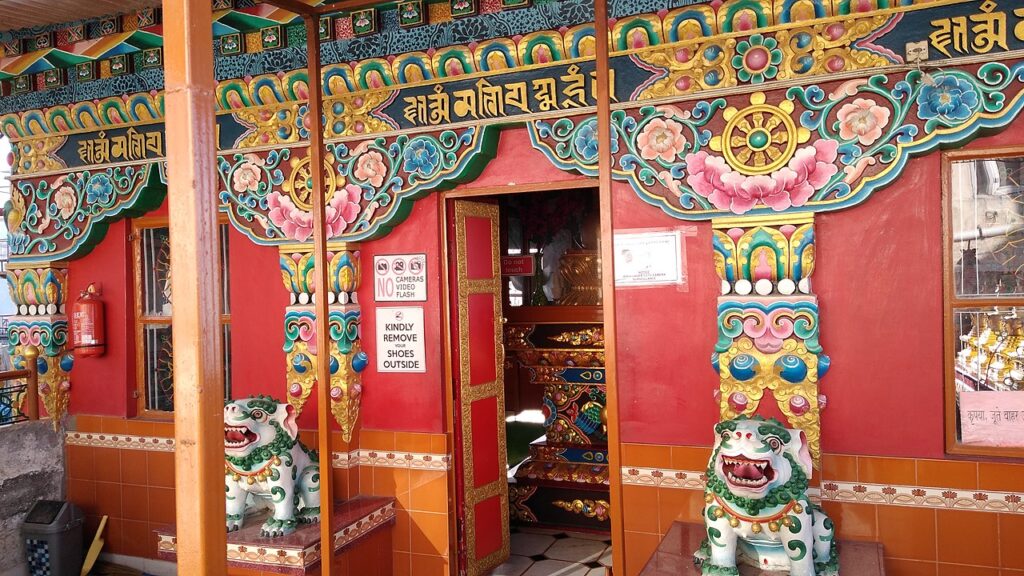A Spiritual Journey: Exploring the Top Buddhist Pilgrimage Sites in India.
India, a land of diverse cultures and traditions, has been a center of Buddhism for centuries. With its rich history and heritage, the country is home to some of the most sacred Buddhist pilgrimage sites in the world. From the birthplace of Buddha to the place where he attained enlightenment, India is full of spiritual destinations that attract pilgrims from all over the world. In this article, we will explore the top Buddhist pilgrimage sites in India and provide useful tips to help you plan your spiritual journey.
1) Bodh Gaya




Bodh Gaya, located in the state of Bihar, is the most significant Buddhist pilgrimage site in India. It is the place where Lord Buddha attained enlightenment under the Bodhi tree. The Mahabodhi temple, a UNESCO World Heritage Site, is the most important attraction in Bodh Gaya. The temple houses a large gilded statue of Buddha in a state of meditation. There are several other temples and monasteries in the area, and visitors can participate in meditation and chanting sessions. The best time to visit Bodh Gaya is from October to February.
2) Sarnath:




Located near the city of Varanasi in Uttar Pradesh, Sarnath is the place where Buddha delivered his first sermon after attaining enlightenment. The Dhamekh Stupa, a towering structure that marks the spot where Buddha preached, is the most significant attraction in Sarnath. The site also features several other stupas, temples, and monasteries. Visitors can explore the ancient ruins and learn about the history of Buddhism. The best time to visit Sarnath is from October to March.
3) Kushinagar:


Located in the state of Uttar Pradesh, Kushinagar is the place where Buddha passed away and attained Parinirvana. The Mahaparinirvana temple, which houses a reclining statue of Buddha, is the most important attraction in Kushinagar. The site also features several other temples and stupas, including the Ramabhar Stupa, which marks the spot where Buddha was cremated. Visitors can learn about the life and teachings of Buddha and meditate in the serene surroundings. The best time to visit Kushinagar is from October to March.
4) Ajanta and Ellora Caves:




The Ajanta and Ellora Caves, located in the state of Maharashtra, are a series of ancient rock-cut Buddhist temples and monasteries. The caves, which date back to the 2nd century BCE, are known for their intricate carvings and paintings that depict the life of Buddha and his teachings. The Ajanta Caves feature 29 caves, while the Ellora Caves feature 34 caves. Visitors can explore the caves and learn about the history of Buddhism. The best time to visit Ajanta and Ellora Caves is from October to March.
5) Dharamshala:




Located in the state of Himachal Pradesh, Dharamshala is the headquarters of the Tibetan government-in-exile and the residence of the Dalai Lama. The city is home to several monasteries and temples, including the Namgyal Monastery, which is the largest Tibetan monastery outside Tibet. Visitors can explore the monasteries, participate in meditation and chanting sessions, and learn about Tibetan culture and history. The best time to visit Dharamshala is from March to June and from September to December.
Accommodations:
There are several hotels and guesthouses in and around these pilgrimage sites that cater to the needs of visitors. From budget-friendly accommodations to luxury hotels, there is something for everyone. Some popular options include Hotel Bodh Vilas in Bodh Gaya, Hotel Gautam in Sarnath, Royal Residency in Kushinagar, Hotel Ajanta Executive in Aurangabad, and Nishaad Resorts in Dharamshala.
Restaurants:
There are plenty of restaurants and food stalls near these pilgrimage sites that serve delicious vegetarian and non-vegetarian food. Some popular dishes include momos, thukpa, dal makhani, and tandoori roti. Some popular restaurants include Bodhi Tree in Bodh Gaya, Sarnath Cafe in Sarnath, Golden Lotus in Kushinagar, Rajdoot Restaurant in Aurangabad, and Lhasa Restaurant in Dharamshala.
Travel Tips:
- Dress appropriately when visiting these pilgrimage sites. It is recommended to wear modest clothing that covers your shoulders and knees.
- Carry enough water and snacks as it can get hot and humid in some places.
- Respect the local customs and traditions and avoid smoking and consuming alcohol in public places.
- Hire a licensed guide to learn about the history and significance of these sites.
- Plan your trip during the off-season to avoid crowds and get better deals on accommodations and transportation.
In conclusion, India is a land of spiritual enlightenment, and the top Buddhist pilgrimage sites are a testament to this fact. Whether you are a spiritual seeker or a history enthusiast, these sites offer a unique and enriching experience that is sure to leave you with a sense of inner peace and tranquility. So, pack your bags, embark on a spiritual journey, and discover the true essence of Buddhism in India.
Frequently Asked Questions (FAQs)
A: The top Buddhist pilgrimage sites in India include Bodh Gaya, Sarnath, Kushinagar, Ajanta and Ellora Caves, and Dharamshala.
A: Bodh Gaya is where Lord Buddha attained enlightenment. The Mahabodhi temple, a UNESCO World Heritage Site, is the main attraction in Bodh Gaya.
A: Buddha delivered his first sermon in Sarnath, near Varanasi. The Dhamekh Stupa marks the spot where he preached.
A: Kushinagar is where Buddha passed away and attained Parinirvana. The Mahaparinirvana temple and the Ramabhar Stupa are significant sites in Kushinagar.
A: The Ajanta and Ellora Caves are ancient rock-cut Buddhist temples and monasteries known for their intricate carvings and paintings depicting the life of Buddha and his teachings.
FAQs
A: Dharamshala is the headquarters of the Tibetan government-in-exile and the residence of the Dalai Lama. It is known for its monasteries, including the Namgyal Monastery.
A: There are various hotels and guesthouses catering to different budgets near the pilgrimage sites. Some popular options include Hotel Bodh Vilas in Bodh Gaya and Royal Residency in Kushinagar.
A: Near the pilgrimage sites, you can find restaurants and food stalls serving vegetarian and non-vegetarian dishes. Popular options include momos, thukpa, dal makhani, and tandoori roti.
A: Some travel tips include dressing appropriately, carrying water and snacks, respecting local customs, hiring a licensed guide, and planning your trip during the off-season to avoid crowds.
A: Visiting these pilgrimage sites offers a unique and enriching experience, allowing you to explore the history, spirituality, and culture of Buddhism. It provides an opportunity for self-reflection and inner peace.

Leave a Reply